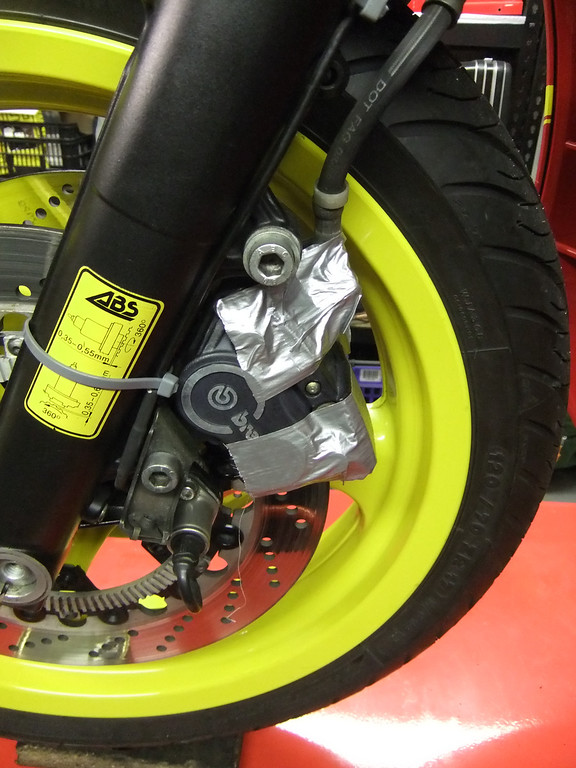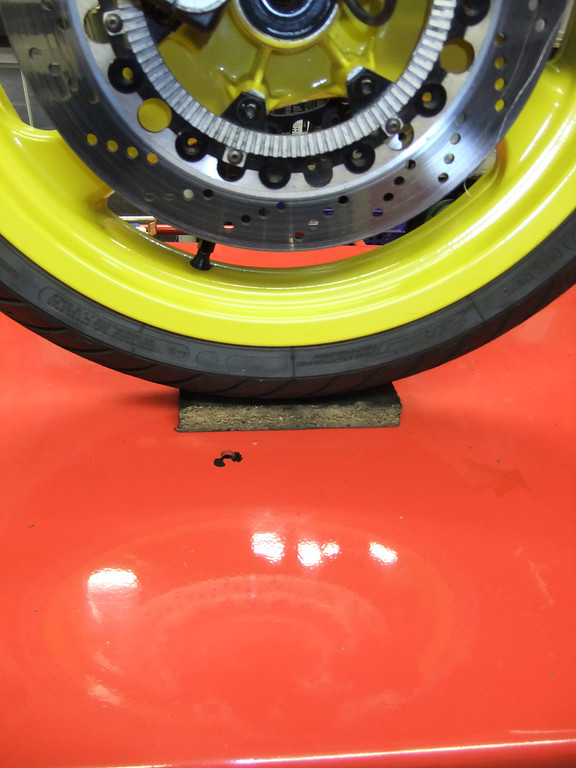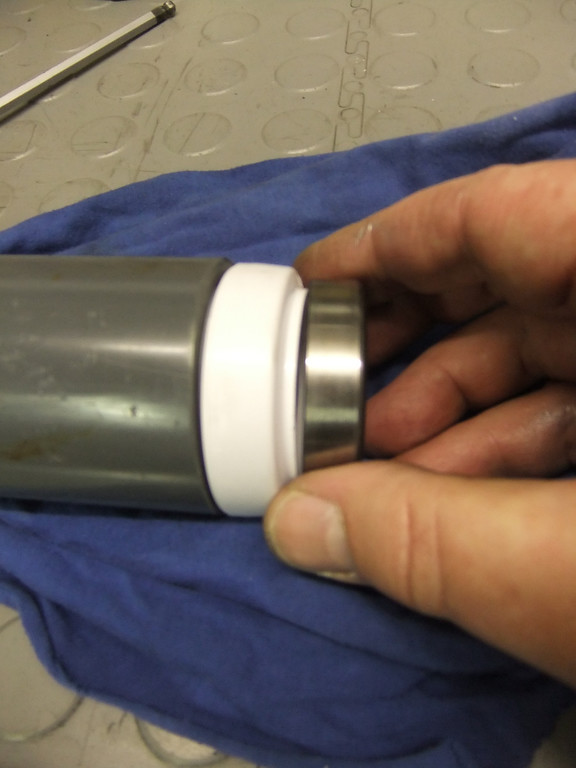1

 16-Valve Bike Fork Seal Change Tue Apr 16, 2013 4:44 am
16-Valve Bike Fork Seal Change Tue Apr 16, 2013 4:44 am
MikeP
Life time member

When I checked the K1 that I bought in October 2012, I discovered that one of the fork seals was misting slightly (it was picked-up as an "advisory" on the annual inspection required for registration and licensing).
Well I replaced it during the general strip-down and clean-up.
In my defence, I will say that I followed the official BMW service manual and it seemed no different to any other fork seal change: Get the bits and pieces stripped off until the oil can be drained, the slider removed from the stanchion, the old seal removed, a new seal fitted and re-assemble in the reverse order.
I am a bit anal about making sure the stanchion is clean before the slider complete with new seal is slid back on and about leaving the fork brace and axle pinch bolts un-tightened on one leg until it has been "settled" by compressing the front-end a couple of times.
My first attempt to replace the seal failed at this early stage. Two bounces of the front and oil was pissing out of the seal (certainly much more than was used to lubricate the seal).
Back to square one.
The next seal seemed to be holding but it too let go within a few road miles.
So in went a third and the fourth that has been in that slider since October. It let go yesterday while road testing my TB balance and oil-water pump seal replacement.
This is how the one before last looked once it was removed:

The culprit seems to be the "sliding bushing" (how the BMW manual refers to this steel ring):

It's not possible to fully compress the thing to get the slider to pass over and it damages the seal as it does so.
Anyway, a Clymer manual (I don't have one - yet. One is on the way) might tell a different story to the BMW one and it might agree with what I learned yesterday while ordering (another) new seal:
Remove the whole fork leg from the bike. Separate the slider from the stanchion as normal, remove the snap-ring and old seal then re-fit the slider to the stanchion and then fit the new seal over the stanchion followed by the snap-ring.
This then begged the question of how the new seal is seated properly. I was told that there's a special tool that goes over the stanchion and is then tapped down to seat the new seal. I could certainly borrow theirs, problem is, they've never had to use one since the dealership is a lot newer than any 16-valve bike fitted with Marzocchi forks.
Short of finding a piece of scaffold pipe with the correct internal and external diameters, I set my mind to making my own "special tool". I think I have the necessary bits and pieces together and will report on the success or failure in due course.
So after all that waffle, the upshot is that I no longer have faith in the official BMW manual and I've learned something that others here probably knew: Marzocchi fork seals need to be fitted differently.
What I need to do now is sort out what the oil capacity is for each leg. I've read things like 350ml in one and 400ml in the other even one source that says the K1 has 450ml per leg:
http://bmwmotorcycletech.info/kforkoil.htm
The (now distrusted) BMW manual says 400ml per leg and makes no mention of a slight reduction between an oil change and a full strip.

Well I replaced it during the general strip-down and clean-up.
In my defence, I will say that I followed the official BMW service manual and it seemed no different to any other fork seal change: Get the bits and pieces stripped off until the oil can be drained, the slider removed from the stanchion, the old seal removed, a new seal fitted and re-assemble in the reverse order.
I am a bit anal about making sure the stanchion is clean before the slider complete with new seal is slid back on and about leaving the fork brace and axle pinch bolts un-tightened on one leg until it has been "settled" by compressing the front-end a couple of times.
My first attempt to replace the seal failed at this early stage. Two bounces of the front and oil was pissing out of the seal (certainly much more than was used to lubricate the seal).
Back to square one.
The next seal seemed to be holding but it too let go within a few road miles.
So in went a third and the fourth that has been in that slider since October. It let go yesterday while road testing my TB balance and oil-water pump seal replacement.
This is how the one before last looked once it was removed:

The culprit seems to be the "sliding bushing" (how the BMW manual refers to this steel ring):

It's not possible to fully compress the thing to get the slider to pass over and it damages the seal as it does so.
Anyway, a Clymer manual (I don't have one - yet. One is on the way) might tell a different story to the BMW one and it might agree with what I learned yesterday while ordering (another) new seal:
Remove the whole fork leg from the bike. Separate the slider from the stanchion as normal, remove the snap-ring and old seal then re-fit the slider to the stanchion and then fit the new seal over the stanchion followed by the snap-ring.
This then begged the question of how the new seal is seated properly. I was told that there's a special tool that goes over the stanchion and is then tapped down to seat the new seal. I could certainly borrow theirs, problem is, they've never had to use one since the dealership is a lot newer than any 16-valve bike fitted with Marzocchi forks.
Short of finding a piece of scaffold pipe with the correct internal and external diameters, I set my mind to making my own "special tool". I think I have the necessary bits and pieces together and will report on the success or failure in due course.
So after all that waffle, the upshot is that I no longer have faith in the official BMW manual and I've learned something that others here probably knew: Marzocchi fork seals need to be fitted differently.
What I need to do now is sort out what the oil capacity is for each leg. I've read things like 350ml in one and 400ml in the other even one source that says the K1 has 450ml per leg:
http://bmwmotorcycletech.info/kforkoil.htm
The (now distrusted) BMW manual says 400ml per leg and makes no mention of a slight reduction between an oil change and a full strip.





























